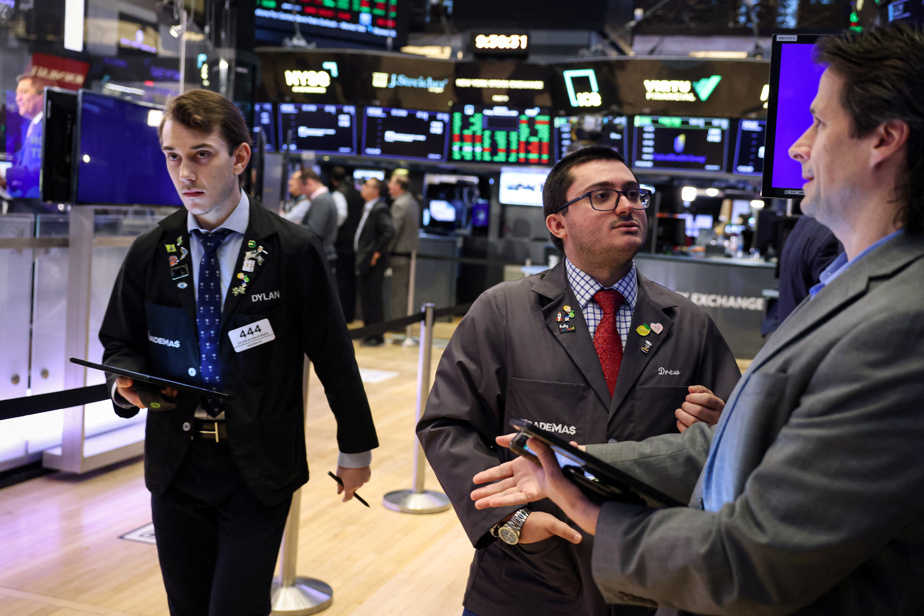“I would like to know why it is good to receive dividends and reinvest them in a stock, mutual fund or ETF given that the price of the stock or fund drops by the amount of the dividend on the day it is paid. -this is announced. The market value remains the same, and therefore there is no capital gain. »
—Yves
You may not realize it, Yves, but you are stepping into minefields.
Dividends, which are the portion of profits that a company can choose to pay out in cash to its shareholders typically four times a year, are extremely popular with investors. Disputing their usefulness is not sacrilege. But not far.
In Canada, many large companies, particularly banks, have been paying generous dividends for decades. And so for many people, receiving a dividend is as natural as receiving a paycheck. Telling these people that it adds no value is unpopular.
And yet, this is what research teaches us.
“This reader hits the nail on the head,” explains Raymond Kerzérho, principal researcher and head of research and shared services at portfolio management firm PWL Capital.
A dividend payment results in a reduction in the issuing company’s cash flow, he says.
“So, on average, dividend payments are systematically offset by a reduction in share price, as documented by two researchers at the University of Minnesota,” Mr. Kerzérho says.
Consult the researchers’ text (in English)
This is because the company that pays $1 in dividend sees the price of its share decrease by $1 on average on the day the dividend is announced, as also demonstrated by a study by David H. Solomon and Samuel M. Hartzmark, of the Boston College Carroll School of Management.
Consult the study (in English)
Profits, whether reinvested or distributed to shareholders in the form of dividends, remain the property of the shareholders, says Mr. Kerzérho.
“It is indeed common for investors, amateur and professional, to treat dividends and capital gains as two separate sources of return. Behavioral finance research calls this error the free dividend fallacy [ou l’illusion du dividende]. »
Fall from the sky
Pursuing dividends can lead to inefficiencies in portfolio construction. For example, as dividends from Canadian companies receive favorable tax treatment in the hands of Canadian investors, they could have an overweighting of Canadian companies in their portfolio, and thus turn their back on international diversification that is potentially more profitable in the long run. term.
Canada represents only 3% of the size of global stock markets. But Canadian investors have on average more than 52% of their assets in Canadian companies, according to 2022 data from the International Monetary Fund (IMF).
Also, receiving money that seems to “fall from the sky” can influence the investor’s behavior.
The study Consumption Dividends carried out in Germany in 2022 showed that investors tended to use their dividends to increase their lifestyle, regardless of their level of wealth or their age.
Consult the study (in English)
An investor in the asset accumulation phase who spends a dividend will of course be at a disadvantage since that money will never work for them again.
Why have many conscientious investors had good returns with dividend stocks? First, many of them invest for the long term and do few transactions, two characteristics that increase the chances of having a favorable experience in the markets.
Second, many companies that pay and increase their dividends have desirable characteristics that ensure good returns. In this sense, the dividend is seen as a “marker” which signals this quality.
However, the dividend is a very ineffective “marker”. For example, another way for companies to enrich their shareholders is through stock buybacks. These buybacks return wealth to shareholders by giving more value to each outstanding share.
Over the past 10 years, S&P 500 companies that have engaged in significant share repurchases (as calculated by the S&P 500 Buyback Index) have experienced an annualized total return of 11.66%, while high-dividend companies of the S&P 500 (S&P 500 High Dividend Index) achieved a total return of 8.80%.
In Canada, S&P/TSX companies that have carried out significant share buybacks (S&P/TSX Composite Buyback Index) have obtained an annualized total return of 9.81% over the past 10 years, compared to 8.03% for companies that pay a high dividend (S&P/TSX Composite High Dividend Index).
There is also a survivorship bias among investors who seek high dividends. Those who have performed well for decades will have a favorable opinion of dividends. But those who have seen their dividend slashed or who have seen a notable drop in their shares on the stock market tend not to defend this way of doing things with as much passion.
Finally, psychologically, one of the positive effects of dividends is that they are paid even when the markets fall. Dividends even continued to be paid after the stock market crash of 1929, and throughout the Great Depression!
Not selling because you know you will receive a dividend is a good way to get through dark years on the stock market. Historically, those who have done so have been well served in subsequent periods.
Consult our section “Demystifying the economy”
